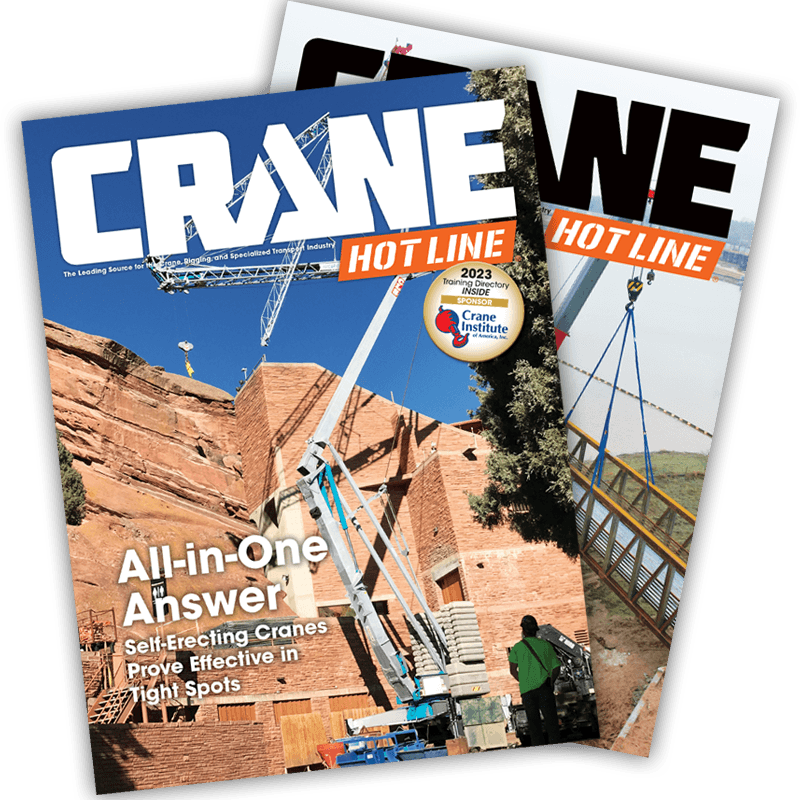National Outrigger Pad and Crane Mat Day (4/24)
The Foundation of Every Lift
Each year on April 24, the industry comes together to observe National Outrigger Pad and Crane Mat Day, emphasizing the critical role ground stabilization plays in lifting operations.
It’s a day that represents the constant need for four outrigger pads to maintain the safety and stability of cranes, aerial lifts and other heavy equipment around the clock, every day of the year.
The Importance of Proper Ground Stabilization
In any lifting operation, the foundation of the lift is the first and most crucial step. No matter how advanced the crane or skilled the operator, improper ground stabilization can compromise safety, efficiency and equipment longevity.
Without the right outrigger pads or crane mats, even the most well-planned lift can fail due to ground shift, uneven terrain or excessive pressure on unstable surfaces. A solid foundation ensures load broadcasting, stability and protection for the equipment, the jobsite and most importantly, the personnel. Proper ground stabilization minimizes accidents, protects infrastructure and extends the lifespan of lifting equipment.

Broken down simply, outrigger pads/crane mats are used for these three reasons:
- To make sure the load handling equipment (LHE) is level within the manufacturer’s guidelines.
- To effectively broadcast the pounds per square inch or per square foot from the outrigger to the ground by increasing the surface area point of contact.
- To prevent the LHE from sinking into the ground, tipping over or collapsing, protecting personnel, property and equipment.
The Occupational Safety and Health Administration (OSHA) and American Society of Mechanical Engineers (ASME) both have published works with information about proper outrigger padding practices.
OSHA 1926.1402(b) states: “The equipment must not be assembled or used unless ground conditions are firm, drained and graded to a sufficient extent so that, in conjunction (if necessary) with the use of supporting materials, the equipment manufacturer’s specifications for adequate support and degree of level of the equipment are met. The requirement for the ground to be drained does not apply to marshes/wetlands.”
ASME B30.5-3.2.1.5 (i) states that blocking under outrigger floats, when required, shall meet the following requirements:
- Have sufficient strength to prevent crushing, bending or shear failure.
- Be of such thickness, width and length as to completely support the float, transmit the load to the supporting surface, and prevent shifting, toppling or excessive settlement under the load.
Correct Practices for Safe and Reliable Lifts
Using outrigger pads and crane mats effectively involves more than just placing them under equipment. Proper use requires:
- Assessing the ground conditions before setting up helps identify potential hazards. In many cases, identifying the soil type allows the project manager to decide whether extra padding is required. In some cases, an exact ground bearing capacity is needed for an allowable ground bearing pressure to be established, where precise engineering calculations will determine the size of the pad required. This is when geotechnical engineers may be necessary.
- Choosing the right pad or mat based on the equipment’s weight, soil composition and expected pressure.
- Inspecting pads and mats regularly for signs of wear or damage, replacing them when necessary.
By following these best practices, crews can mitigate risks and enhance the performance of their equipment, ensuring safer and more efficient lifting operations.
Material Matters
The right material depends on factors like weight capacity, site conditions and longevity.
- Wood Mats: Traditional and cost-effective, these are common in dry geographies.
- Steel Mats: Extremely durable, ideal for high-load applications.
- Composite Pads: Lightweight, non-absorbent and resistant to weathering and chemicals, these are the industry’s preferred choice for long-term use.
- Combination: To create an optimal outrigger system with conservative weight distribution, combining materials can enhance safety. Placing a wood pad on a composite pad improves load spreading due to wood’s rigidity. Similarly, using a composite or wood pad on a steel mat prevents cosmetic damage from the aluminum outrigger shoe. In this setup, the pad is called a transition mat.
Handles, Shapes and Special Features
Beyond material selection, choosing the right handle type, shape and size can enhance usability and efficiency:
- Handles: Rope, rubber or internal cutouts make for easy transportation and positioning. As pads get larger and heavier, using wire rope or chain handles may be required to sustain the weight of the pad.
- Shapes and Sizes: Round pads are common as pads get heavier, allowing the operator to put them on the side and roll them into place, while square and rectangular options give more surface area for weight distribution but may require more labor or a forklift to move.
- Special Features: Engineered designs like interlocking mats, non-slip surfaces, and custom dimensions are common.
Lifting Safely Every Time
National Outrigger Pad and Crane Mat Day serves as a vital reminder that stability starts from the ground up. As technology advances and lifting operations evolve, investing in high-quality ground stabilization solutions remains the best way to protect crews, equipment and jobsites. Whether it’s a routine lift or a complex heavy haul, the right outrigger pads and crane mats are the foundation of safety, performance and success.




